氯化镍(II),Nickel(II) chloride,98%
产品编号:Sigma-339350| CAS NO:7718-54-9| MDL NO:MFCD00011142| 分子式:NiCl2| 分子量:129.60
本网站销售的所有产品仅用于工业应用或者科学研究等非医疗目的,不可用于人类或动物的临床诊断或者治疗,非药用,非食用,
| 产品名称 | 氯化镍(II) |
|---|---|
| 英文名称 | Nickel(II) chloride,98% |
| CAS编号 | 7718-54-9 |
| 产品熔点 | 1001ºC |
| 产品沸点 | Sublimes at 973ºC; deliquesces |
| 产品密度 | 3.55 |
| 精确质量 | 127.873055 |
| LogP | 1.37900 |
| 外观性状 | 橙色粉末 |
| 溶解性 | H2O: soluble | slightly soluble | 不同温度(℃)时每100毫升水中的溶解克数: 53.4g/0℃;56.3g/10℃;66.8g/20℃;70.6g/30℃;73.2g/40℃ 81.2g/60℃;86.6g/80℃;87.6g/100℃ |
| 稳定性 | 1.如果遵照规格使用和储存则不会分解。 2.避免接触氧化物,水分/潮湿。经升华过的产品比较稳定,缓慢吸收水分。粉末状产品易潮解,在空气中迅速变绿。溶于水、乙醇、乙二醇和氨水。 3.镍试剂具有毒性和致癌性,使用时一定要小心谨慎。 |
| 储存条件 | 储存在阴凉,干燥的地方 |
相关文档
化学品安全说明书(MSDS)
下载MSDS质检证书(COA)
相关产品
| 符号 |
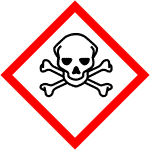
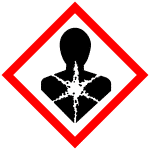
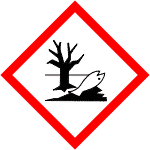
GHS06, GHS08, GHS09 |
|---|---|
| 信号词 | Danger |
| 危害声明 | H301 + H331-H315-H317-H334-H341-H350i-H360D-H372-H410 |
| 警示性声明 | P201-P261-P280-P284-P301 + P310 + P330-P304 + P340 + P312-P308 + P313-P403 + P233 |
| 个人防护装备 | Eyeshields;Faceshields;full-face particle respirator type N100 (US);Gloves;respirator cartridge type N100 (US);type P1 (EN143) respirator filter;type P3 (EN 143) respirator cartridges |
| 危害码 (欧洲) | T:Toxic; N:Dangerous for the environment; |
| 风险声明 (欧洲) | R25;R43;R45;R50/53 |
| 安全声明 (欧洲) | S24-S29-S37-S45-S53 |
| 危险品运输编码 | UN 3288/9139 |
| WGK德国 | 3 |
| RTECS号 | QR6475000 |
| 包装等级 | III |
| 危险类别 | 6.1(b) |
| 海关编码 | 2827350000 |
|
Section1. IDENTIFICATION OF THE SUBSTANCE/MIXTURE Product identifiers Product name: Nickel(II) chloride Index-No.: 028-011-00-6 CAS-No.: 7718-54-9 Section2. HAZARDS IDENTIFICATION Classification of the substance or mixture Classification according to Regulation (EC) No 1272/2008 [EU-GHS/CLP] Carcinogenicity, Inhalation (Category 1A) Germ cell mutagenicity (Category 2) Reproductive toxicity (Category 1B) Acute toxicity, Inhalation (Category 3) Acute toxicity, Oral (Category 3) Specific target organ toxicity - repeated exposure (Category 1) Skin irritation (Category 2) Respiratory sensitization (Category 1) Skin sensitization (Category 1) Acute aquatic toxicity (Category 1) Chronic aquatic toxicity (Category 1) Classification according to EU Directives 67/548/EEC or 1999/45/EC May cause cancer by inhalation. May cause harm to the unborn child. Possible risk of irreversible effects. Toxic by inhalation and if swallowed. Toxic: danger of serious damage to health by prolonged exposure through inhalation. Irritating to skin. May cause sensitization by inhalation and skin contact. Very toxic to aquatic organisms, may cause long-term adverse effects in the aquatic environment. Label elements Labelling according Regulation (EC) No 1272/2008 [CLP] Pictogram Signal wordDanger Hazard statement(s) Toxic if swallowed. Causes skin irritation. May cause an allergic skin reaction. Toxic if inhaled. May cause allergy or asthma symptoms or breathing difficulties if inhaled. Suspected of causing genetic defects. H350iMay cause cancer by inhalation. H360DMay damage the unborn child. Causes damage to organs through prolonged or repeated exposure. Very toxic to aquatic life with long lasting effects. Precautionary statement(s) Obtain special instructions before use. Avoid breathing dust. Avoid release to the environment. Wear protective gloves. P301 + P310IF SWALLOWED: Immediately call a POISON CENTER or doctor/ physician. Call a POISON CENTER or doctor/ physician. Supplemental Hazardnone Statements Restricted to professional users. According to European Directive 67/548/EEC as amended. Hazard symbol(s) R-phrase(s) R49May cause cancer by inhalation. R61May cause harm to the unborn child. R23/25Also toxic by inhalation and if swallowed. R48/23Also toxic: danger of serious damage to health by prolonged exposure through inhalation. R38Irritating to skin. R68Possible risk of irreversible effects. R42/43May cause sensitization by inhalation and skin contact. R50/53Very toxic to aquatic organisms, may cause long-term adverse effects in the aquatic environment. S-phrase(s) S53Avoid exposure - obtain special instructions before use. S45In case of accident or if you feel unwell, seek medical advice immediately (show the label where possible). S60This material and its container must be disposed of as hazardous waste. S61Avoid release to the environment. Refer to special instructions/ Safety data sheets. Restricted to professional users. Other hazards - none Section3. COMPOSITION/INFORMATION ON INGREDIENTS Substances Formula: Cl2Ni Molecular Weight: 129,60 g/mol ComponentConcentration Nickel(II) chloride CAS-No.7718-54-9- EC-No.231-743-0 Index-No.028-011-00-6 Section4. FIRST AID MEASURES Description of first aid measures General advice Consult a physician. Show this safety data sheet to the doctor in attendance. If inhaled If breathed in, move person into fresh air. If not breathing, give artificial respiration. Consult a physician. In case of skin contact Wash off with soap and plenty of water. Take victim immediately to hospital. Consult a physician. In case of eye contact Rinse thoroughly with plenty of water for at least 15 minutes and consult a physician. If swallowed Never give anything by mouth to an unconscious person. Rinse mouth with water. Consult a physician. Most important symptoms and effects, both acute and delayed Gastrointestinal disturbance, To the best of our knowledge, the chemical, physical, and toxicological properties have not been thoroughly investigated. Indication of any immediate medical attention and special treatment needed no data available Section5. FIREFIGHTING MEASURES Extinguishing media Suitable extinguishing media Use water spray, alcohol-resistant foam, dry chemical or carbon dioxide. Special hazards arising from the substance or mixture Hydrogen chloride gas, Nickel/nickel oxides Advice for firefighters Wear self contained breathing apparatus for fire fighting if necessary. Further information no data available Section6. ACCIDENTAL RELEASE MEASURES Personal precautions, protective equipment and emergency procedures Wear respiratory protection. Avoid dust formation. Avoid breathing vapors, mist or gas. Ensure adequate ventilation. Evacuate personnel to safe areas. Avoid breathing dust. Environmental precautions Prevent further leakage or spillage if safe to do so. Do not let product enter drains. Discharge into the environment must be avoided. Methods and materials for containment and cleaning up Pick up and arrange disposal without creating dust. Sweep up and shovel. Keep in suitable, closed containers for disposal. Reference to other sections For disposal see section 13. Section7. HANDLING AND STORAGE Precautions for safe handling Avoid contact with skin and eyes. Avoid formation of dust and aerosols.Avoid exposure - obtain special instructions before use. Provide appropriate exhaust ventilation at places where dust is formed. Conditions for safe storage, including any incompatibilities Store in cool place. Keep container tightly closed in a dry and well-ventilated place. Specific end uses no data available Section8. EXPOSURE CONTROLS/PERSONAL PROTECTION Control parameters Components with workplace control parameters Exposure controls Appropriate engineering controls Avoid contact with skin, eyes and clothing. Wash hands before breaks and immediately after handling the product. Personal protective equipment Eye/face protection Face shield and safety glasses Use equipment for eye protection tested and approved under appropriate government standards such as NIOSH (US) or EN 166(EU). Skin protection Handle with gloves. Gloves must be inspected prior to use. Use proper glove removal technique (without touching glove's outer surface) to avoid skin contact with this product. Dispose of contaminated gloves after use in accordance with applicable laws and good laboratory practices. Wash and dry hands. The selected protective gloves have to satisfy the specifications of EU Directive 89/686/EEC and the standard EN 374 derived from it. Full contact Material: Nitrile rubber Minimum layer thickness: 0,11 mm Break through time: > 480 min Splash protection Material: Nitrile rubber Minimum layer thickness: 0,11 mm Break through time: > 30 min test method: EN374 If used in solution, or mixed with other substances, and under conditions which differ from EN 374, contact the supplier of the CE approved gloves. This recommendation is advisory only and must be evaluated by an Industrial Hygienist familiar with the specific situation of anticipated use by our customers. It should not be construed as offering an approval for any specific use scenario. Body Protection Complete suit protecting against chemicals, The type of protective equipment must be selected according to the concentration and amount of the dangerous substance at the specific workplace. Respiratory protection Where risk assessment shows air-purifying respirators are appropriate use a full-face particle respirator type N100 (US) or type P3 (EN 143) respirator cartridges as a backup to engineering controls. If the respirator is the sole means of protection, use a full-face supplied air respirator. Use respirators and components tested and approved under appropriate government standards such as NIOSH (US) or CEN (EU). Section9. PHYSICAL AND CHEMICAL PROPERTIES Information on basic physical and chemical properties a) AppearanceForm: powder b) Odourno data available c) Odour Thresholdno data available d) pHno data available e) Melting point/freezingMelting point/range: 1.001 °C point f) Initial boiling point and no data available boiling range g) Flash pointnot applicable h) Evaporation rateno data available i) Flammability (solid, gas) no data available j) Upper/lowerno data available flammability or explosive limits k) Vapour pressureno data available l) Vapour densityno data available m) Relative density3,55 g/mL at 25 °C n) Water solubilityno data available o) Partition coefficient: n- no data available octanol/water p) Autoignitionno data available temperature q) Decompositionno data available temperature r) Viscosityno data available s) Explosive propertiesno data available t) Oxidizing propertiesno data available Other safety information no data available Section10. STABILITY AND REACTIVITY Reactivity no data available Chemical stability no data available Possibility of hazardous reactions no data available Conditions to avoid no data available Incompatible materials Peroxides Hazardous decomposition products Other decomposition products - no data available Section11. TOXICOLOGICAL INFORMATION Information on toxicological effects Acute toxicity LD50 Oral - rat - 186 mg/kg Skin corrosion/irritation no data available Serious eye damage/eye irritation Eyes - rabbit - Mild eye irritation - OECD Test Guideline 405 Respiratory or skin sensitization May cause allergic respiratory and skin reactions Germ cell mutagenicity In vitro tests showed mutagenic effects Carcinogenicity This is or contains a component that has been reported to be carcinogenic based on its IARC, OSHA, ACGIH, NTP, or EPA classification. Human carcinogen. IARC:1 - Group 1: Carcinogenic to humans (Nickel(II) chloride) Reproductive toxicity Presumed human reproductive toxicant Specific target organ toxicity - single exposure no data available Specific target organ toxicity - repeated exposure Causes damage to organs through prolonged or repeated exposure. Aspiration hazard no data available Potential health effects InhalationToxic if inhaled. Causes respiratory tract irritation. IngestionToxic if swallowed. SkinToxic if absorbed through skin. Causes skin irritation. EyesCauses eye irritation. Signs and Symptoms of Exposure Gastrointestinal disturbance, To the best of our knowledge, the chemical, physical, and toxicological properties have not been thoroughly investigated. Additional Information RTECS: QR6475000 Section12. ECOLOGICAL INFORMATION Toxicity Toxicity to fishmortality NOEC - Oncorhynchus mykiss (rainbow trout) - 4,9 mg/l - 96,0 h Toxicity to daphnia and EC50 - Daphnia magna (Water flea) - 6,0 - 9,3 mg/l - 48 h other aquatic invertebrates Toxicity to algaeEC50 - Pseudokirchneriella subcapitata (green algae) - 0,006 - 0,012 mg/l - 96 h Persistence and degradability no data available Bioaccumulative potential BioaccumulationOncorhynchus mykiss (rainbow trout) - 180 d -1.000 µg/l Bioconcentration factor (BCF): 4 Mobility in soil no data available Results of PBT and vPvB assessment no data available Other adverse effects Very toxic to aquatic life with long lasting effects. Section13. DISPOSAL CONSIDERATIONS Waste treatment methods Product Offer surplus and non-recyclable solutions to a licensed disposal company. Dissolve or mix the material with a combustible solvent and burn in a chemical incinerator equipped with an afterburner and scrubber. Contaminated packaging Dispose of as unused product. Section14. TRANSPORT INFORMATION UN number ADR/RID: 3288IMDG: 3288IATA: 3288 UN proper shipping name ADR/RID: TOXIC SOLID, INORGANIC, N.O.S. (Nickel(II) chloride) IMDG: TOXIC SOLID, INORGANIC, N.O.S. (Nickel(II) chloride) IATA:Toxic solid, inorganic, n.o.s. (Nickel(II) chloride) Transport hazard class(es) ADR/RID: 6.1IMDG: 6.1IATA: 6.1 Packaging group ADR/RID: IIIIMDG: IIIIATA: III Environmental hazards ADR/RID: yesIMDG Marine pollutant: yesIATA: no Special precautions for user no data available Section15. REGULATORY INFORMATION This safety datasheet complies with the requirements of Regulation (EC) No. 1907/2006. Safety, health and environmental regulations/legislation specific for the substance or mixture no data available Chemical Safety Assessment SECTION 16 - ADDITIONAL INFORMATION N/A |
|
~% 
7718-54-9 |
| 文献:Chemical Physics Letters, , vol. 146, p. 501 - 506 |


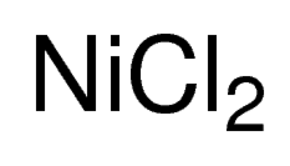
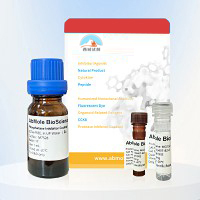


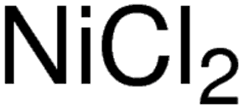

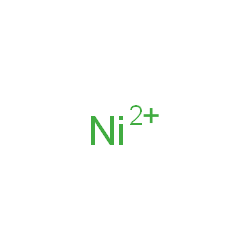





 浙公网安备 33010802013016号
浙公网安备 33010802013016号